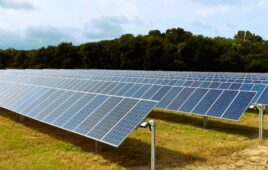The U.S. Department of Energy (DOE) has announced up to $20 million for research and development that will advance the manufacturability of mid-sized flow battery systems.
With this funding opportunity, DOE will partner with industry to address technical and manufacturing challenges that have prevented flow battery systems from achieving cost targets and commercial viability. DOE seeks proposals for collaborative, multi-stage R&D projects that improve manufacturing processes for individual flow battery components and integrate those new or improved components into a prototype system with a mid-sized capacity for grid, industrial, or transportation applications.
Projects selected will:
- Enable cost-effective, scalable manufacturing for mid-sized (10- to 100-kWh) flow battery systems.
- Test and validate the flow battery system’s manufacturability.
- Strengthen domestic flow battery supply chains by connecting battery manufacturing stakeholders.
DOE anticipates making four to six awards. A minimum cost-share of 20% for R&D projects is required. Concept papers are due on April 29, 2021. For additional details, including application and submission requirements, visit the EERE Exchange. Interested applicants may wish to register to attend an informational webinar on April 1, 2021.
Funding for this opportunity will be provided by the Office of Energy Efficiency and Renewable Energy’s Advanced Manufacturing Office. Additionally, DOE’s Office of Electricity will support testing for selected projects at facilities like the Grid Storage Launchpad. This $75 million research facility, based at Pacific Northwest National Laboratory, will boost clean energy adaptation and accelerate the development and deployment of long-duration, low-cost grid energy storage.
This flow battery funding opportunity is part of DOE’s Energy Storage Grand Challenge, a Department-wide program to accelerate the development, commercialization, and utilization of next-generation energy storage technologies and sustain American global leadership in energy storage.
News item from DOE





With the current supply circuits for electrifying households and small industry dependent on over designed power generation stations to accommodate the known and expected daily double surge in demand, the VRFB system appears to be the answer to shoulder and soften the severity of such peak demands. If sufficient households/small businesses are fitted with a battery each, all connected to the grid, they can act as a very large power storage device which can be drained during peak demand periods to feed the grid.
I think that this investment is a very good one as it appears to attempt to focus on solving the supply problem at grass roots. Building power generating stations can cost billions and take up to 7 years to complete. Pumping the money into this will take almost as long and most probably cost a similar amount. Without then having to pay for high maintenance and operating costs and lowering the overall carbon footprint.